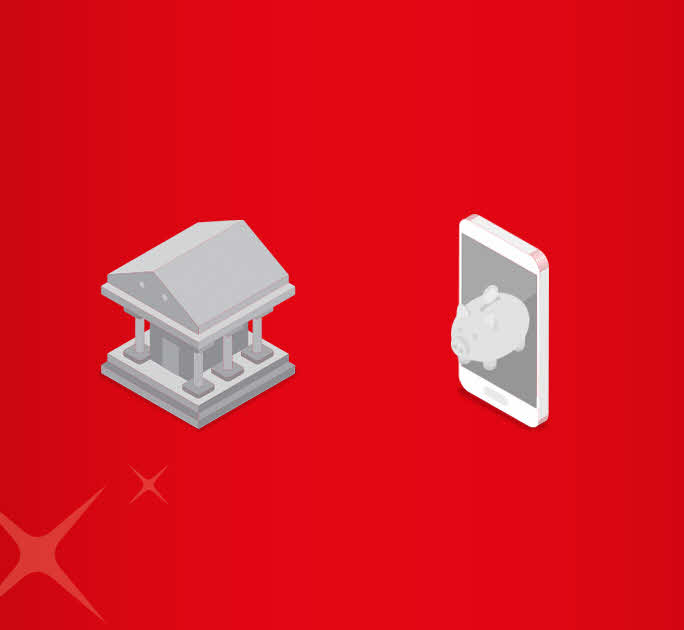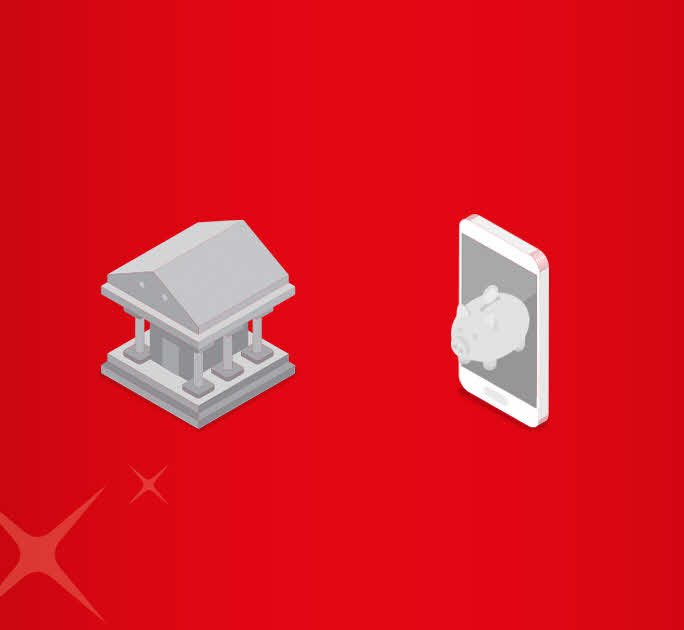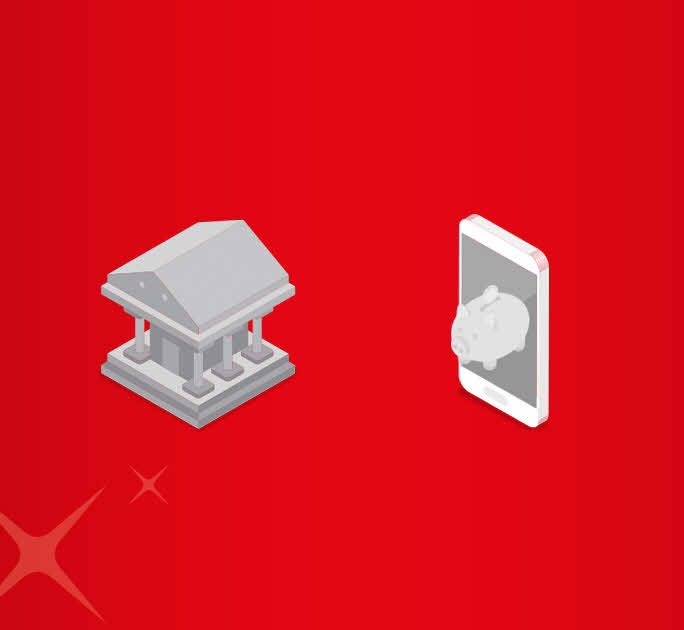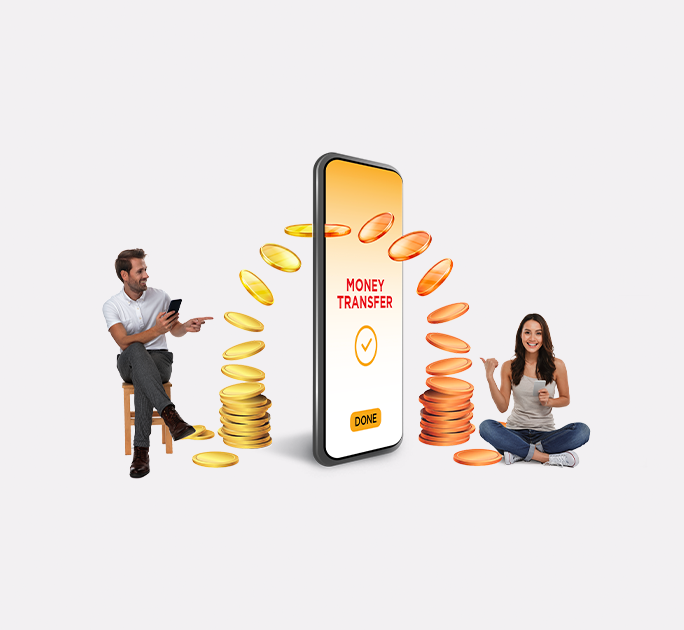- Save
- Invest
- Borrow
- Pay
- More
- Customer Services

What is UPI ID? Meaning, Benefits & How to Create One
Key Takeaways
- Unified Payment Interface (UPI) allows secure digital payments.
- It is a convenient way of receiving and sending money without sharing bank account details.
- You can easily download UPI-enabled apps onto your smartphone from the Google Play and iOS app store.
- You can use UPI to make payments at retail outlets or initiate fund transfers.
- The official mobile banking apps of most banks offer UPI as a choice of fund transfer.
Introduction
UPI is a simple way for you to send and receive money. If you want to know what UPI ID is and why it matters, this article explains it in detail. You will also learn how UPI works, where you can use it, and answers to common questions that make everyday payments easier.
What is UPI ID? (Meaning & Full Form)
A UPI ID, or Unified Payments Interface ID, is a unique virtual address linked to your bank account. It lets you send or receive money without entering account numbers, IFSC codes, or branch details. The UPI ID meaning is simple: it acts like an identifier, much like an email ID, for instant fund transfers.
Furthermore, many banks also provide mobile applications through which you can transfer funds quickly. DBS Bank’s digibank app not only enables seamless UPI transfers but also links to savings accounts that earn interest rates of up to 5.5%. Open your DBS Savings Account today to enjoy both convenience and high savings account interest rates.
How to Create a UPI ID
If you are wondering how to create UPI ID, the process is simple and almost the same across apps:
- Download a UPI-enabled app and set a four-digit app PIN.
- Select the SIM linked to your bank account. The app will verify it automatically.
- Choose your bank from the list. A unique UPI ID number will be generated for you.
Here is a UPI ID example: if your registered mobile number is 1234567890, your UPI ID may look like 1234567890@upi. This UPI ID number can then be used to send or receive money instantly.
How Does UPI ID Work?
A UPI ID, also called a Virtual Payment Address (VPA), links your bank account to a virtual address, making money transfers seamless. Here’s how it works step by step:
- Enter the UPI ID (VPA): Type the recipient’s UPI ID instead of account number or IFSC. This ensures the UPI ID details are correct.
- Enter the amount: Specify the money you want to transfer.
- Authenticate the transaction: Confirm using your app PIN or biometric verification. A UPI transaction ID is generated for every transfer.
- Instant transfer: Funds move directly from your account to the recipient’s account immediately.
- Receive money: Others can send money to your UPI ID number without needing your account details.
Bank smarter with a DBS Bank Savings Account with hassle-free online banking.
Finding UPI ID in mobile banking applications
Bank apps handle UPI IDs differently, and here’s a simple guide on how to check UPI ID.
- You will first have to verify your registered mobile number.
- Once you have verified it, the app will prompt you to set a 4-digit PIN.
- You can find your UPI ID under the ‘My Profile’ section of the UPI app.
- The typical nomenclature for UPI IDs for bank apps is yourname@bankname.
Here, you have the convenience of changing your UPI ID to your liking.
Download the digibank by DBS app to get started.
Can I Have Multiple UPI IDs?
Yes, you can have multiple UPI IDs linked to the same bank account. This allows you to manage different payment purposes, such as personal and business transactions, separately. Additionally, having multiple UPI IDs can help reduce payment failures by providing alternative routes for transactions.
Most apps allow you to create extra UPI IDs within the app by going to the settings or profile section. Multiple UPI IDs help manage personal, business, or other payments and make transactions smoother.
How is UPI ID used?
For a successful transaction, you need to know the UPI ID of the beneficiary. On confirmation of the ID of your beneficiary and other details such as the amount to be transferred, you need to key in the PIN, which you can create or change using your bank debit card. You can change or create a PIN by clicking on your UPI ID, displayed on the top left corner of the UPI app.
In some UPI-enabled bank apps, this second PIN is not necessary to complete the transaction.
Can I create my UPI ID?
You can easily create your UPI ID in five simple steps. They are as under:
- Download the UPI enabled app on the phone.
- Log in to the application
- Click on the main menu and select ‘create UPI ID’
- You will see a new screen where you will have to enter the prefix for the ID.
- Lastly, link this payment address with your bank account.
How to Send Money Using UPI ID?
To send money using a UPI ID, follow these steps:
Step 1: Open your UPI-enabled app.
Step 2: Enter the recipient’s UPI ID. Make sure the UPI ID details are correct to avoid errors.
Step 3: Type the amount you want to send.
Step 4: Confirm the payment using your PIN or biometric verification.
Step 5: The money is transferred instantly, and you receive a confirmation with a UPI transaction ID.
How to Receive Money Using UPI ID?
Step 1: Share your UPI ID with the sender.
Step 2: The sender enters your UPI ID in their app.
Step 3: Once the payment is completed, you get a notification of the received amount along with the UPI transaction ID, which can be used to track or verify the payment.
Step 4: Funds are credited instantly to your linked bank account.
What is a UPI Reference Number?
Every UPI transaction generates a reference number for tracking purposes:
- A UPI reference number is a unique ID generated for each transaction.
- It helps track and verify payments.
- You can use it to check payment status, report failed transactions, or confirm a transfer with your bank or app support.
What is the UPI Transaction Limit?
UPI transactions are subject to limits set by banks and apps:
- Individual transactions are limited to INR 1–2 lakh.
- Daily cumulative limits may apply, usually around INR 1–2 lakh.
- Smaller banks or apps may have lower limits. Check your app for exact limits.
Benefits of UPI for Customers & Merchants
UPI offers advantages for both customers and merchants by enabling direct transfers using only a UPI ID.
For Customers:
- Instant transfers without sharing account details
- Available 24/7, including holidays
- Can be used for bill payments, shopping, and peer-to-peer transfers
UPI ID example: A customer buying groceries can pay the shopkeeper by simply entering the shop’s UPI ID in their app, without needing cash or card details.
For Merchants:
- Faster payments without handling cash
- Reduced payment failures
- Easier reconciliation with digital records
UPI ID example: A small café owner can display a QR code linked to their UPI ID, allowing customers to scan and pay instantly after a meal.
How to Solve the “UPI Registration Failed” Issue?
There are different methods to solve the registration issue. Here are the most effective ways to solve the problem.
-
Change the slot of your SIM card:
You should insert the SIM card registered with the bank account in the 1st SIM slot. If it is inserted into the 2nd SIM slot, then you need to take it out and change the slot. After you change the slot, it is essential to clear the data of the app.
-
Use mobile internet data instead of Wi-Fi to create your account
Whenever you register your account in your preferred UPI app, it is better that you create the account using your mobile internet data instead of Wi-Fi. If possible, try to use the internet from the same SIM number you use to create your account. In case of a slow internet connection, you may face errors, or the OTP may get delayed. Hence, use a stable internet connection to register conveniently.
-
Disable the VoLTE option on the phone
With mobile data, you usually get the VoLTE option, which is displayed next to the Wi-Fi and mobile data symbols on the top right of your phone screen. Go into the internet settings application in your mobile phone and disable the VoLTE option.
-
Provide necessary permissions
When you open your app the first time, it will seek your permission to enable contacts, etc. If you do not give the necessary permissions, you may run into issues later. It is best to provide all permissions asked by the app.
-
Check your mobile number
When trying to create your UPI account, you need to check that the mobile number you are using is linked with the bank account. If not, you will face registration issues. Check the number first, and then create your account on the app.
Open Savings Account
in 3 easy steps
Aadhar Card + PAN Card + Video KYC
= Account opened!
Conclusion
UPI has made life easier. Money transfer is literally on your fingertips now. Sending or receiving money is not only quick but safe from data theft as well. You do not need to remember or share bank account details while initiating a transaction. All these attributes make UPI-enabled payments the most secure, seamless, and hassle-free transactions.
Open savings account online with DBS Bank and experience effortless digital banking.
*Disclaimer: This article is for information purposes only. We recommend you get in touch with your income tax advisor or CA for expert advice.
Frequently Asked Questions - UPI ID
-
What is an example of UPI?
An example of UPI is sending money to a shopkeeper by entering their UPI ID, such as name@bank. The payment generates a unique UPI transaction ID for tracking.
-
How to create a second UPI ID?
Go to your UPI app, open Profile or Manage UPI ID, and select the option to add another UPI ID. You can link it to the same bank account for convenience.
-
Is VPA the same as UPI ID?
Yes, VPA (Virtual Payment Address) and UPI ID are the same. Both act as UPI ID details that identify your account for money transfers.
-
Are there charges for using UPI?
Most banks do not charge for UPI transactions. Transfers, bill payments, or shopping done using your UPI ID are usually free.














